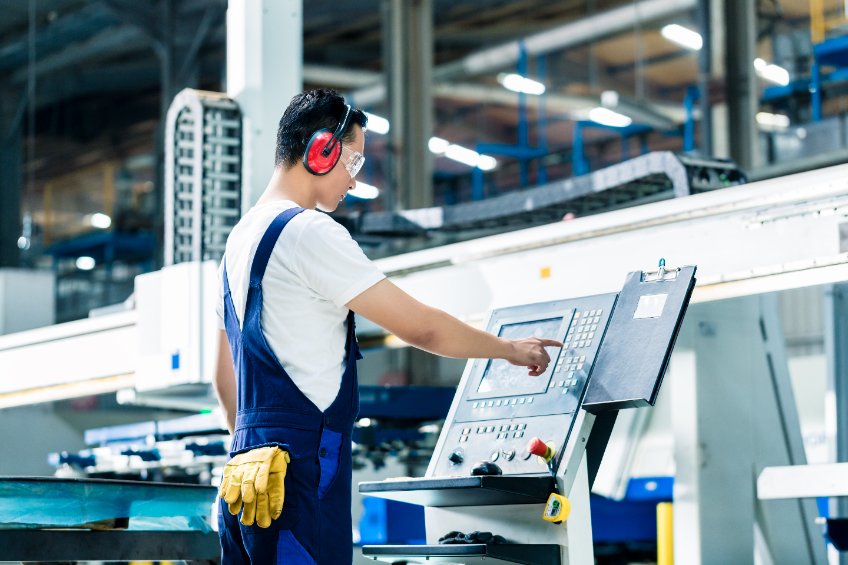This is part two of a two-part article. Please read part one first.
In the first article, we covered the impact of 5G on the public sector and education. Use cases for enterprises, however, are equally as profound and daunting. Let’s take a look at how 5G is poised to rapidly change how enterprises conduct business, as well as the challenges faced by each category.
Manufacturing – leveling up
For years, robots and computer-connected machinery have been transforming manufacturing facilities, resulting in greater efficiency, improved productivity and reduced waste.
Now, the addition of a robust 5G network to these facilities will enhance that performance, enabling greater safety, flexibility and automation on the factory floor. It does so through robotics, AI-powered monitoring for real-time QA and alerts, reconfigurable assembly lines, digital twins for predictive maintenance, and smarter asset management across warehouses and logistics. These types of automation help reduce manufacturers’ production costs and deliver better operational efficiency.
One way the efficiency delivered by 5G becomes apparent is with ultra-reliable, low latency connectivity (URLLC). Moving to an “edge cloud” that’s either on-premise or nearby a manufacturing facility, a 5G network can dramatically reduce the “round trip” time between an action and a response. With 5G network slicing, this allows enterprises to tailor the Quality of Service (QoS) to specific locations and use cases like high-speed manufacturing.
In addition to the improved quality of product output and reduced downtime, 5G has the power to be an economic engine for manufacturing facilities across the U.S. Accenture reports this trend translates into $349.9 billion in added industry revenues, $159.2 billion in added GDP and 1.2 million jobs created or transformed.
While the current supply chain problems may be seen as strictly a supply/demand issue coming out of COVID, an overlooked element of this crisis is that manufacturing and logistics systems are running at or near capacity. Robert Swinney, an operations professor at Duke University’s Fuqua School of Business, wrote in late 2021 that because ports are designed to run at high utilization, “it doesn’t take much to overwhelm them.” Clearly there are any number of ways disruption could impact the supply chain, including network reliability. 5G can deliver real-time data to those operating and administering ports, ensuring the facilities run at peak capacity and maximum efficiency.
Challenges
As with any technology paradigm shift, this transition is not without its challenges:
● Investment: Like any business transformation, financial metrics, like return on investment (ROI) and total cost of ownership (TCO), are at the cornerstone of any conversation. 5G is no exception. With the right solutions and partners, 5G-enabled deployments can not only pay for themselves — through better operational efficiency, reduced operating expenses, improved safety and security — but also unlock new revenue streams and certain industries.
● Talent/Expertise: With new technologies comes the need to find/train talent to understand how it operates. Depending on the technology and talent pool, the difficulty associated with this issue may vary. Ultimately, talent will realize the growing demand to educate themselves because they recognize the financial implications.
● Managing complexity: The benefits that come along with 5G may also require operational changes or entirely new processes to maximize the benefits. So, realize that you need to properly manage the operational complexity of such a technological transformation. For example, seek solutions that allow IT teams to easily manage remote access points through a single pane of glass, or tools to easily configure and reconfigure networks in a matter of minutes instead of months. With proper planning and appropriate resources in place, 5G technology can be implemented with minimal disruption while delivering long-term benefits.
While there may be challenges as you shift investment in 5G for your enterprise organization, take confidence in knowing the investments will put your business or institution in a prime position to compete and succeed in this new era of 5G. On the 5G supply side, equipment manufacturers and solutions providers are also advancing their business models to facilitate the move to 5G. For example, companies like Inseego are offering complete 5G edge cloud solutions that reduce CAPEX spend, evolving to a more nimble, scalable, and technologically modern OPEX model.
Simply put, a modernized enterprise organization is not sustainable with a legacy approach to IT and OT. Enterprises can no longer afford to wait to transform day-to-day operations, reduce waste and increase ESG, increase productivity, and increase ROI powered by unparalleled speed and technology.

